INTERVIEW WITH ZARA JOAN MILLER
By Rebecka Öhrström Kann 29/05/2024
Zara Joan Miller is a London-based artist whose multifaceted work stretches across the fields of poetry, filmmaking, and performance. Slipping between forms like writing, slide performances, and musical collaborations, Miller’s attentive practice responds to the voices and life around her. Through play and tact, Miller’s work unravels boundaries to make space for collective dialogues and a sensitivity to a subtle wildness remaining untamed. We spoke about her desire to incorporate motherhood in her practice, inviting other voices into your work, and the process of making her poetry collection Blue Monday.
Rebecka Öhrström Kann: How would you describe your work to someone who is unfamiliar with it?
Zara Joan Miller: It’s always difficult, isn't it? But I guess I move across different forms. Mostly poetry, film, performance, documentary filmmaking but also drawing and working with dancers and musicians. I think there’s often something elastic at play in what I do and how I bring in different forms. The writing probably goes back the furthest. It’s mostly poetry and it's only really been in the last couple of years that I've been performing it in a live context, often with a visual element that I bring in.
Last year, I started playing with a 35mm slide projector in my work where I’m sort of writing to the rhythm of the projector. Each carousel has 80 slides, so there’s 80 clicks to play with. I wrote a piece called It Grew She Grew (2023) that consisted of 80 lines of poetry that play with this mechanical rhythm of the projector. I feel like that marked quite a shift from some of my previous writing, in that it was written in the third person, whereas usually I write from a more personal perspective. This felt maybe more objective and more critical as a way of writing. I was using this 80-80 symmetry to interrogate how human and non-human nature are often valued in terms of productivity and controllability. I think I've always been drawn to these kinds of constructed dualities we've invented between humans and “nature”, and I have this desire to blur those boundaries in my work. In 2019, I made a film called Soft Rio (2021) with the dancer Astrid Sweeney where we shot two rolls of 16-millimeter film and superimposed our bodies over some footage I'd shot of eels at Billingsgate Fish Market in London.
Zara Joan Miller: It’s always difficult, isn't it? But I guess I move across different forms. Mostly poetry, film, performance, documentary filmmaking but also drawing and working with dancers and musicians. I think there’s often something elastic at play in what I do and how I bring in different forms. The writing probably goes back the furthest. It’s mostly poetry and it's only really been in the last couple of years that I've been performing it in a live context, often with a visual element that I bring in.
Last year, I started playing with a 35mm slide projector in my work where I’m sort of writing to the rhythm of the projector. Each carousel has 80 slides, so there’s 80 clicks to play with. I wrote a piece called It Grew She Grew (2023) that consisted of 80 lines of poetry that play with this mechanical rhythm of the projector. I feel like that marked quite a shift from some of my previous writing, in that it was written in the third person, whereas usually I write from a more personal perspective. This felt maybe more objective and more critical as a way of writing. I was using this 80-80 symmetry to interrogate how human and non-human nature are often valued in terms of productivity and controllability. I think I've always been drawn to these kinds of constructed dualities we've invented between humans and “nature”, and I have this desire to blur those boundaries in my work. In 2019, I made a film called Soft Rio (2021) with the dancer Astrid Sweeney where we shot two rolls of 16-millimeter film and superimposed our bodies over some footage I'd shot of eels at Billingsgate Fish Market in London.
I've noticed that I’m drawn to the presence of animals in the city and the wildness that's just inherent, undermining the sense of order that seems to structure such a place. And sometimes this is just a very ordinary wildness, like how the wind moves things. But observing these forces through my work and how they can be tamed or remain untameable is something that I’ve noticed I always come back to. I recently performed a poem that was written as a kind of love song to the foxes I often encounter on my way home.
RÖK: That’s so lovely.
RÖK: That’s so lovely.
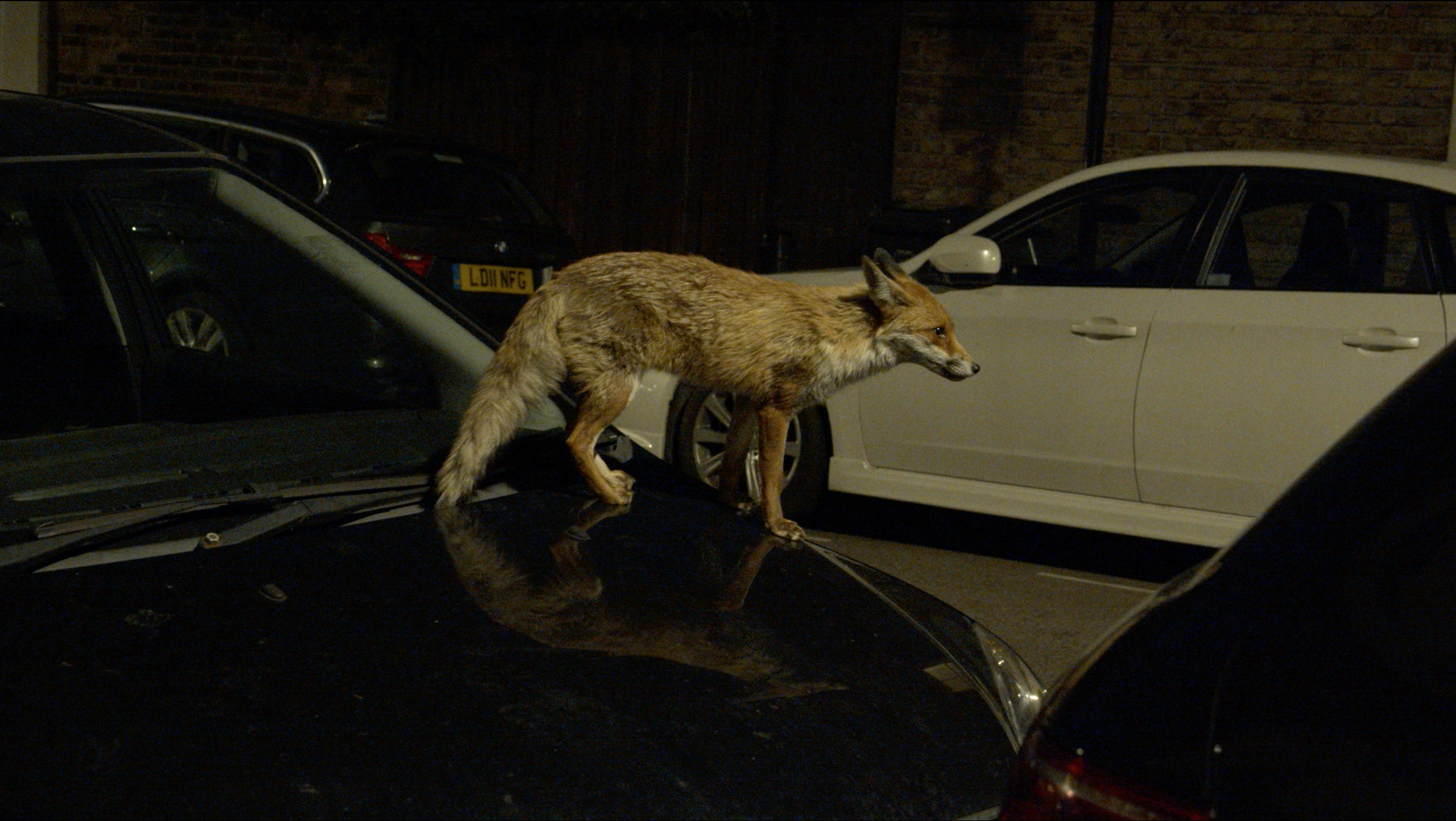
ZJM: Yeah! [laughs] There are a lot of foxes around where I live and there's something very special about encountering them. Me and my partner will tell each other if we see a fox on the way home, what it was like…That kind of standoff that you have with them always feels special, there’s a sense of grace in encountering these foxes. Anyway, I wrote this piece that was a kind of love song to these encounters, and I performed that last year with footage that I'd shot of the local foxes and had this playing on a small monitor on stage on a plinth. And that was the only thing on the stage, I was off stage, opposite, reading this love song and I played Nina Simone’s Wild is the Wind at the end. So, I think there's often quite a lot of combining different forms and inviting different kinds of connections across different moments.
RÖK: I'm curious about how you started creating, you said you started with poetry, but I’m also interested in how you moved into other mediums like performance.
ZJM: When I was little I would write poems to my mum and, you know, you sort of forget about these things, but then you move house and come across things…and it feels significant to mention my mother because I wrote a poem for her funeral and then I didn't write a poem for another 10 years. I guess it feels relevant to mention this now because I'm on the cusp of motherhood myself and so it's an interesting time for me to pause and consider my work because it's inevitably going to change and I'm really open and excited about that. Even already, I'm finding that the way that I think about my work is being altered or influenced by the physical changes as well as the thoughts around it. I wrote this piece recently inspired by something my friend’s auntie said. When I told her I was pregnant she said to me that “giving birth is like you're a volcano” and I was like, whoa, that's amazing and so powerful. So, the most recent thing I wrote to be performed was inspired by what she said and, I think, similar to what I was saying before, it’s something that sounds quite epic, but at the same time also quite ordinary. It’s something humans do every day and I think I'm again drawn to this kind of quiet, mundane, wild energy.
RÖK: Your work Blue Monday (2022) also deals with that mundaneness as well. Could you talk a little about the process of making that work?
![Zara Joan Miller and Ute Kanngießer, Blue Monday LP, 2024, Reading Group. Image courtesy of the artist.]()
RÖK: Your work Blue Monday (2022) also deals with that mundaneness as well. Could you talk a little about the process of making that work?
ZJM: Blue Monday is a really good example of that. The work started on “Blue Monday” 2018. I woke up and started writing, still in bed sort of half asleep and I wrote a very short poem about “Blue Monday”. Like I said, I hadn't really been writing poetry, so this was the first time in maybe 10 years. I think I'd been intrigued by this idea of a “Blue” Monday and allocating a specific date to depression – the idea that the third Monday in January is the most depressing day of the year – and how in a way there is something comforting in this suggestion of a mass global sadness. But then of course it was originally a publicity stunt, funded by Sky Travel in 2005, based on a pseudo-scientific calculation. In a way, I think that makes it even more perfect. This kind of capitalist drive behind it all, and how that shapes our understanding of ourselves and each other. Because I think regardless of the pseudo-science, it really resonates with a lot of people, the concept of the January blues. Especially if you live in the northern hemisphere, you don't need much convincing that it might be one of the most depressing times.

And I began to enjoy writing in this way, very early in the morning, so I thought I'm going to do this for a year, until the next Blue Monday, in 2019. I started writing with a felt tip because my hands would be so tired in the morning. The felt tip allowed me to kind of half-asleep scribble and now I write with a felt tip all the time. But yeah, when it came to Blue Monday January 2019, I only really felt like I’d got the hang of writing in that way so, I thought, “Oh, I'll carry on to the next Blue Monday.” And then I kind of just carried on doing it until the next three Blue Mondays passed, through the pandemic. Actually, right up until the book was published in April 2022, I was still adding poems. And there was a great deal of writing, but most of it didn't make the book, obviously, and a lot of the time working was also the editing process.
I think even though the origin of the book was Blue Monday, the book itself isn't necessarily about Blue Monday or depression, but rather a way of observing the world and moving through a year at different speeds.
I’m curious to know what you think about that because the publishers were talking about whether or not to be very specific in the blurb about Blue Monday and the pseudoscience, and we decided to kind of keep that as a small note within the book rather than to contextualise it as that. And I feel like that was probably the right choice in the end because I think it works better as a kind of suggestion.
RÖK: No, I agree. I also really enjoyed how that mundanity bleeds through the structure of the book as well, like how you have that email in the middle, for example. I think I was really surprised about that.
ZJM: The publishers, JOAN, were really open to playing around with form, they didn't want anything overly polished. That email was from a writing group I had when we went into lockdown. We carried on sending poems to each other under the subject “indoors.” And so that was one of the poems that I sent to the group so it made sense that it would stay in that format in the book.
RÖK: Collaboration clearly plays a large part in what you do and so I’d be curious to hear a little about the role that collaboration plays in your practice at large but also your work with Ute Kanngießer whom you’ve performed your work Blue Monday with.
ZJM: Ute is very special. I asked her to write something for the back of the book and she came back with this really lovely meditation on blue and it was quite long so the publishers thought it would be good to have as an Afterword instead, rather than cut it back, and I agreed. Then, the following January, 2023, I was invited to read at Cafe OTO and coincidentally the date was the day before Blue Monday, the “Blue” Sunday and so I asked Ute if she would like to try a duo. I'd never really worked with a musician in this way before and barely done much performing myself at the time, so it was quite new territory. But I felt that Ute’s cello playing always really spoke to me and that she would help to open up the work in new ways, and we could create a new dialogue. Ute has a very sensitive ear and a very special way of reading the world and I think that’s why I asked her to write something for the book. We performed almost the whole of Blue Monday in this matinee show as a duo for maybe an hour. The recording of that performance was recently released as an LP by Derek Baron, who runs the Reading Group label in New York. We are both very proud to have our duo released by them. They've released some records that I really admire, like Ishmael Reed's The Hands of Grace and a trio between Fred Moten, Brandon López and Gerald Cleaver…both really beautiful records. And since then, Ute and I've been asked to perform a few times, most recently at Muse Gallery in Notting Hill, and that's where I shared the volcano piece I was just talking about. Ute’s sound kind of matched my thoughts and pulled them into new places, but most of the time we just talk for hours. We eat and talk and talk and talk…. In the end it's a friendship that happens to be a collaboration as well.
R: That's such a lovely story.
ZJM: Yeah, she's quite an incredible musician. I guess another regular collaborator I've already mentioned is Astrid Sweeney, who I've worked with a few times now. Recently I spent some time with her in Brussels where she lives and filmed her dancing. She was trained in Irish dance as a child and has kind of come back to it 15-20 years later, but kind of experimenting with its expectations. I filmed her after I cast her leg in plaster, and it was quite moving somehow. Another collaborator, whose limb I've also cast in plaster, funnily enough, is Lia Mazzari, who used to, not so much nowadays, perform with a whip. We made this video where we went into the woods in Wales, and I cast her arm and she had to kind of whip herself out of it. But it’s funny to even mention that work because the video has never been shown publicly. It was really just us playing with some ideas
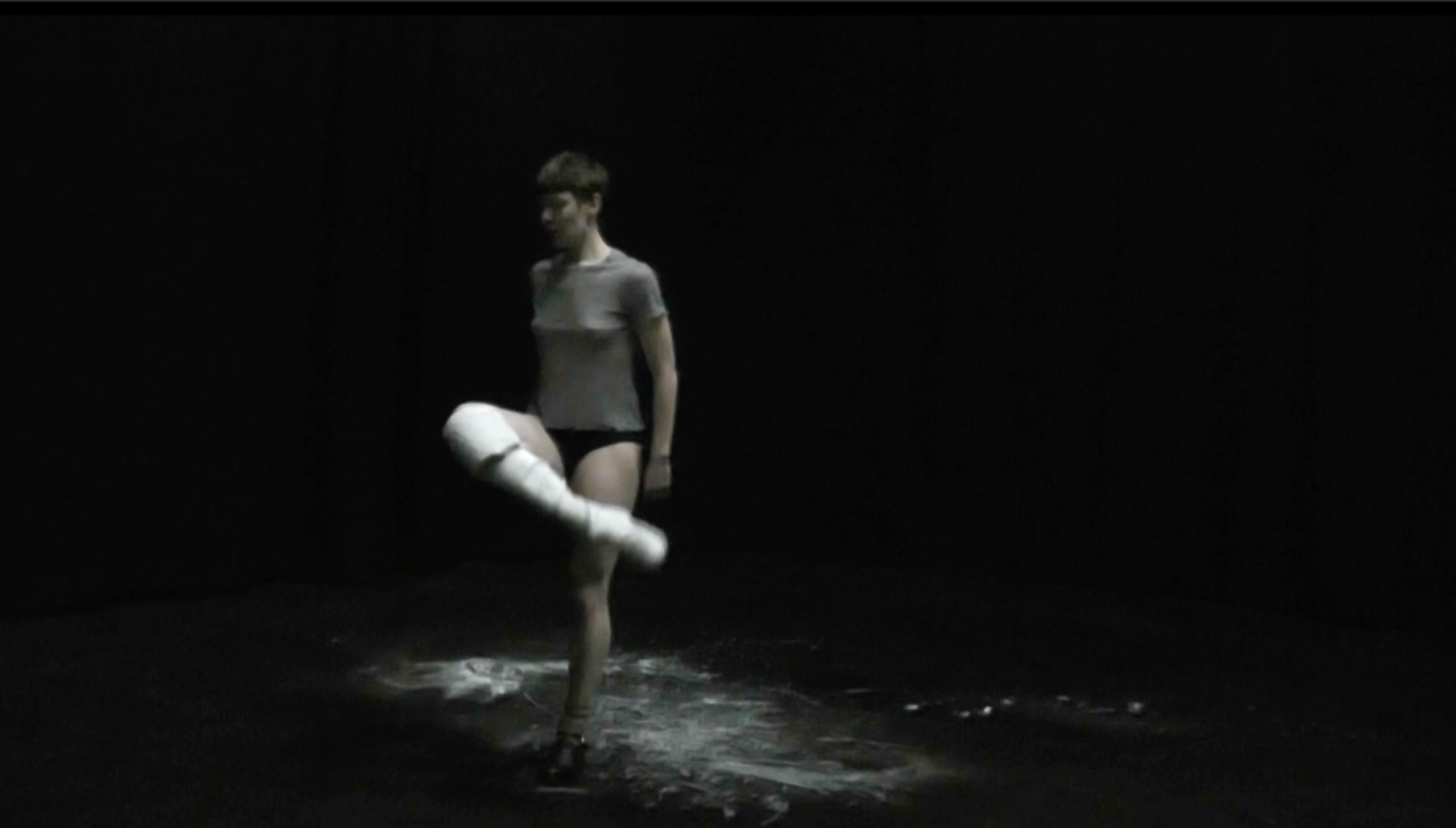
RÖK: You work across many different mediums like embroidery, performance, writing, and filmmaking. I'm curious how these practices feed into each other as you move in between them and how you decide on a specific medium for a work.
ZJM: I think things tend to happen quite organically rather than deciding on a medium and then making work. Performing came as a result of wanting to share the writing and also because I became involved with Cafe OTO, which is a live music venue in East London. When I became involved with them and the musicians there the collaborations just naturally happened. I also have a job filming live shows there, so that feeds into the more documentary film side of my practice. At the moment, I’m working on a documentary about a tribute concert to the late saxophonist Peter Brötzmann.
My friend Jocelyne taught me embroidery and we met because we both volunteer at Headway East London, a brain injury charity. Working with Headway as a volunteer initially, I've also ended up making four short documentary films about the charity and the artists and musicians there. So, I think more often than not, the work is a result of the people around me and the experiences they weave into my life. It comes out quite organically from just living really.
RÖK: Who/or what are some of your influences that helped you develop the language of your work?
ZJM: I think these two communities that I just mentioned, have been such an influential alternative education to me. 2016 feels like a significant year when I look back because that’s when I started volunteering at Headway and I also started working part time at Cafe OTO. Both places have been influential in terms of direction and ways of thinking. They allowed me to understand that you could have a more kind of experimental approach and challenge the idea of the trained artist. Becoming friends with and being exposed to a lot of experimental or improvisational musicians has had a mysterious influence on me. My performances are often very carefully crafted, but there is a sense of improvisation in the initial writing being like learning how to listen very deeply and then respond in the live context, through voice, time, and pace, even though I don't tend to improvise with words. I think there's a bit of stretch space for that, but I like to kind of have the paper and the words and know what I'm working with. The material needs to be there. I also met my partner Billy through OTO. He's an artist and he plays the violin and he's shaped my work in ways that I can't really label. But again, I think it's this idea that art is really just akin to living, you know. It's not this separate practice for me, which is hard to explain without sounding too idealistic, I guess, but I think it's something that I think about often and I'm thinking about a lot at the moment.

Often my work can veer into quite serious territory but I also want to invite a sense of play. You’ve got the kind of verbal play, which is very much part of music and thinking how you can bring that into your practice as a visual artist. I’m thinking about this a lot now, too because I think it's something that I'd like to enter motherhood with. Incorporating this transitional experience into my practice, rather than seeing it as a limitation, hindrance, or time away from the work because I think that's the way we've been conditioned to think about motherhood. And it feels really valuable for me now to kind of challenge that a little bit and I have friends around me who are artists with children. Not many of them, but they're really strong women and they're very dedicated to both and at the moment that is really inspiring to me… I think there are also many people I don't know who have influenced me, but in terms of poetry, I'm very inspired by the work of Jayne Cortez, Eileen Myles and Fred Moten.
I've noticed more and more in my writing in the last year or so, that I've been kind of bringing in this third person. I don't know where that came from, but I'll start a lot of poems by incorporating “she said” and bringing in this dialogue with other writers. It's become a habit, even bringing in what my friend's auntie said, how giving birth is like you're a volcano, as a way to open the poem. And I think it’s a way of being in dialogue with other, often female, writers. I recently wrote a piece that was an imagined dialogue with Rachel Carson, who was a marine biologist and an incredible writer for a performance with Amy Dickson first at No.9 Cork Street in London, and then at Jewellers in Morecambe. I also performed a new piece in January at In Vitro project space in Brussels, where I was sort of in dialogue with several writers – Etel Adnan, Jayne Cortez, June Jordan, Donna Haraway, M Nourbese Phillip, Helen Macdonald and others. And that's very different from Blue Monday, where it was much more me and my perspective, I would say. I’m enjoying bringing in these different voices in my work.
RÖK: I’m really intrigued by that idea of play. You also mentioned your interest in nature, and I was curious if you could speak a little bit about that interest.
ZJM: I suppose going back to what I said about It Grew She Grew, and kind of interrogating how human and non-human nature is labeled and how to blur those boundaries. When I was thinking about that piece I was on a train passing a lot of green fields and I put some lipstick on and, you know, when you blot your lips on paper? I noticed that the print that it made looked like cracked earth and how there’s maybe something comparable between the historic and current consumption of the female body and that of the earth. So the slideshow, for that performance, was created by pressing lips against 80 slides to create 80 images. And obviously with the climate crisis, we're sort of forced to think more and more about this kind of consumerist approach to nature. You've got this backdrop which we didn't have when we were kids really, like we all knew about the hole in the ozone layer but that was probably about it. And now we are watching the world enfold in in a Silent Spring moment…when you've kind of got this backdrop, it's like how can we face that and make work about it, and be critical of it in a way that’s not ambivalent but also not so critical that there's no hope.
I've noticed more and more in my writing in the last year or so, that I've been kind of bringing in this third person. I don't know where that came from, but I'll start a lot of poems by incorporating “she said” and bringing in this dialogue with other writers. It's become a habit, even bringing in what my friend's auntie said, how giving birth is like you're a volcano, as a way to open the poem. And I think it’s a way of being in dialogue with other, often female, writers. I recently wrote a piece that was an imagined dialogue with Rachel Carson, who was a marine biologist and an incredible writer for a performance with Amy Dickson first at No.9 Cork Street in London, and then at Jewellers in Morecambe. I also performed a new piece in January at In Vitro project space in Brussels, where I was sort of in dialogue with several writers – Etel Adnan, Jayne Cortez, June Jordan, Donna Haraway, M Nourbese Phillip, Helen Macdonald and others. And that's very different from Blue Monday, where it was much more me and my perspective, I would say. I’m enjoying bringing in these different voices in my work.
RÖK: I’m really intrigued by that idea of play. You also mentioned your interest in nature, and I was curious if you could speak a little bit about that interest.
ZJM: I suppose going back to what I said about It Grew She Grew, and kind of interrogating how human and non-human nature is labeled and how to blur those boundaries. When I was thinking about that piece I was on a train passing a lot of green fields and I put some lipstick on and, you know, when you blot your lips on paper? I noticed that the print that it made looked like cracked earth and how there’s maybe something comparable between the historic and current consumption of the female body and that of the earth. So the slideshow, for that performance, was created by pressing lips against 80 slides to create 80 images. And obviously with the climate crisis, we're sort of forced to think more and more about this kind of consumerist approach to nature. You've got this backdrop which we didn't have when we were kids really, like we all knew about the hole in the ozone layer but that was probably about it. And now we are watching the world enfold in in a Silent Spring moment…when you've kind of got this backdrop, it's like how can we face that and make work about it, and be critical of it in a way that’s not ambivalent but also not so critical that there's no hope.
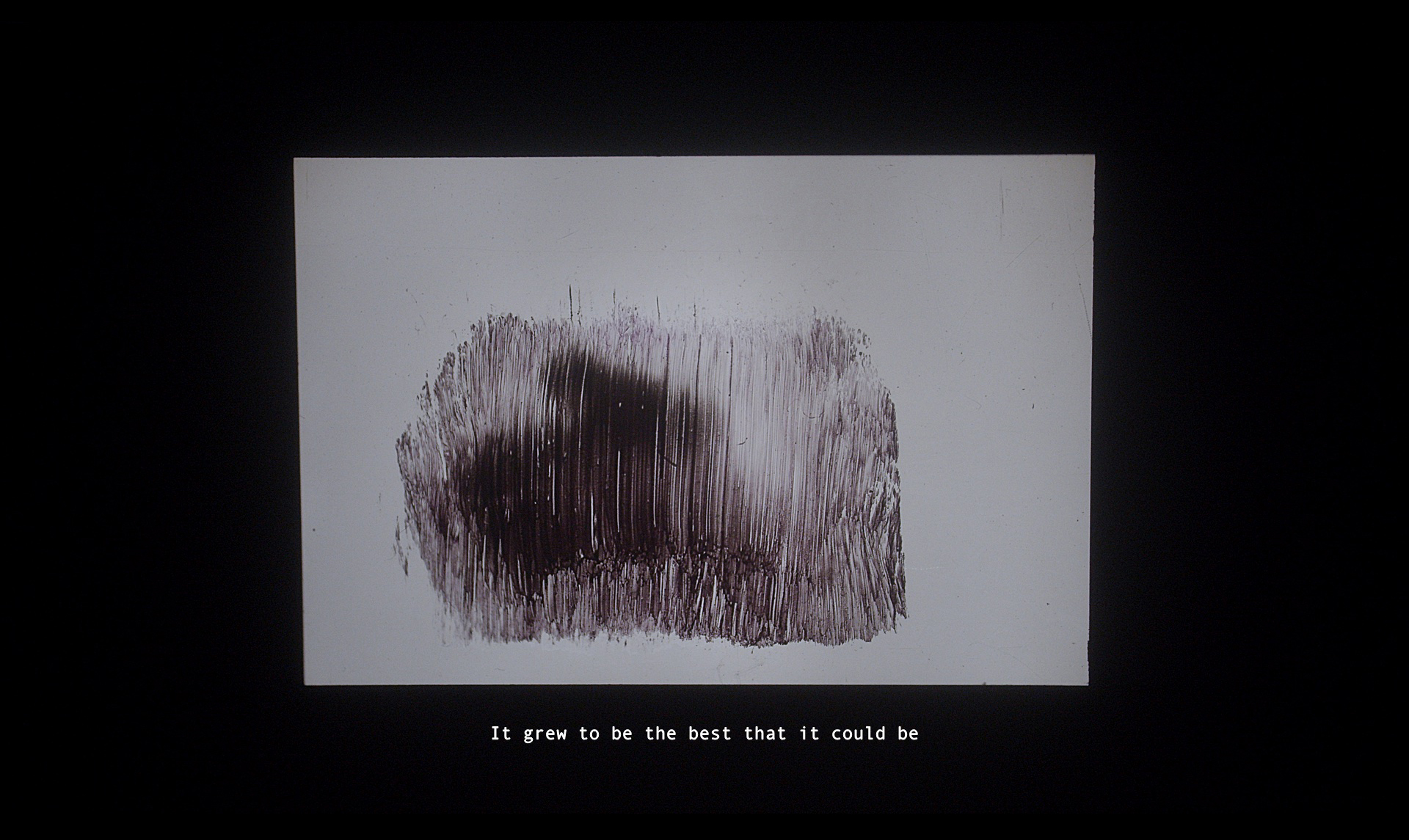
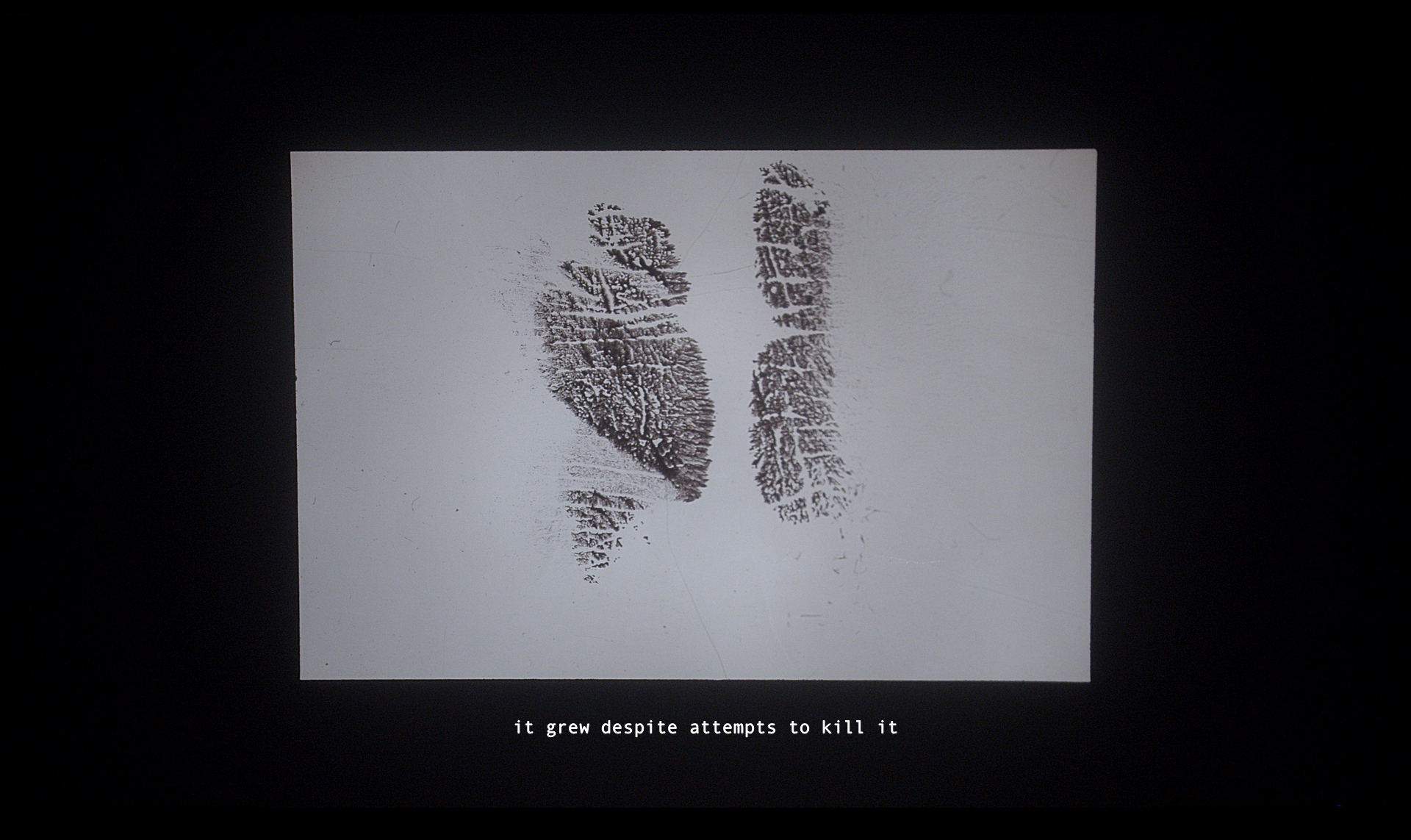
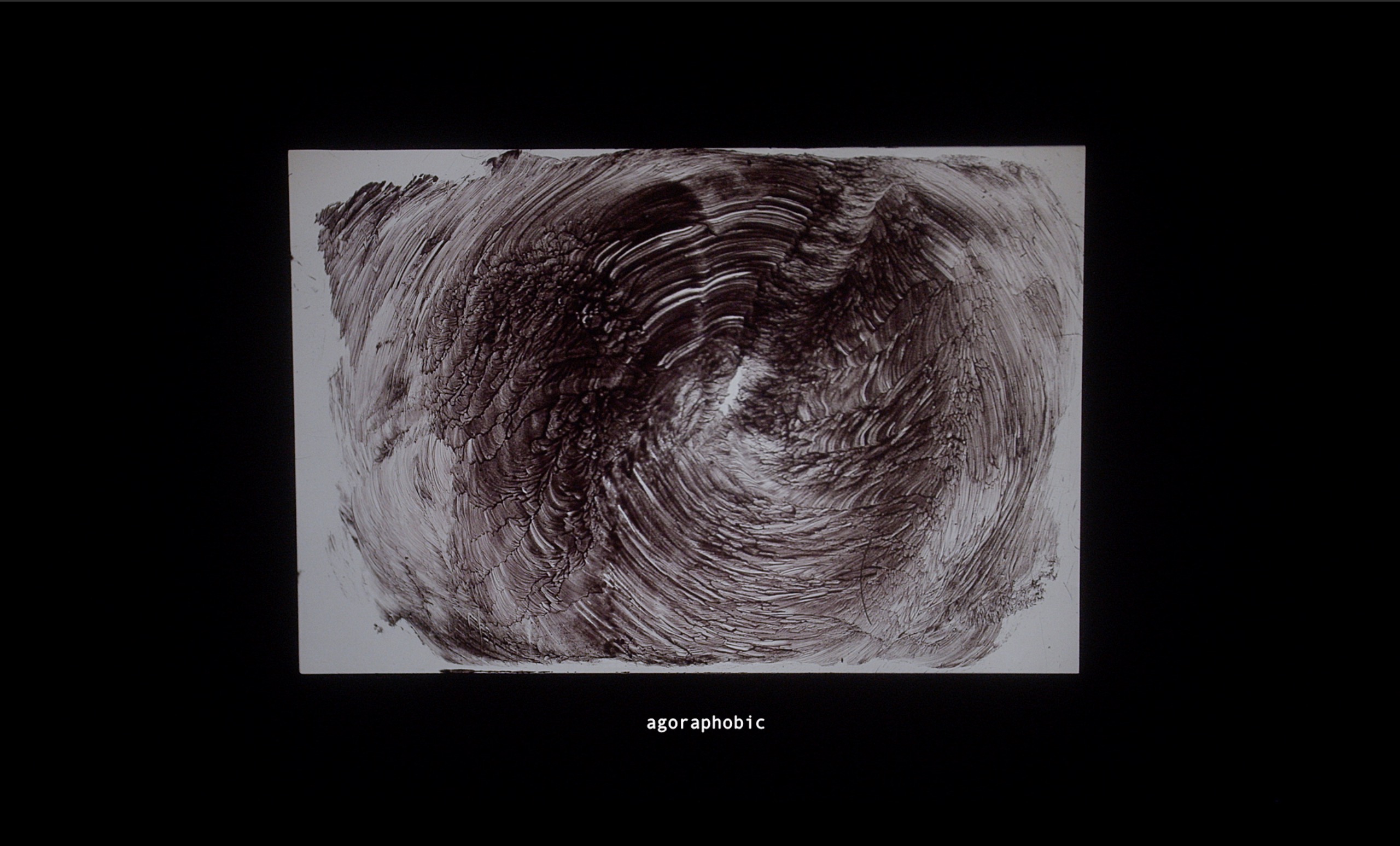
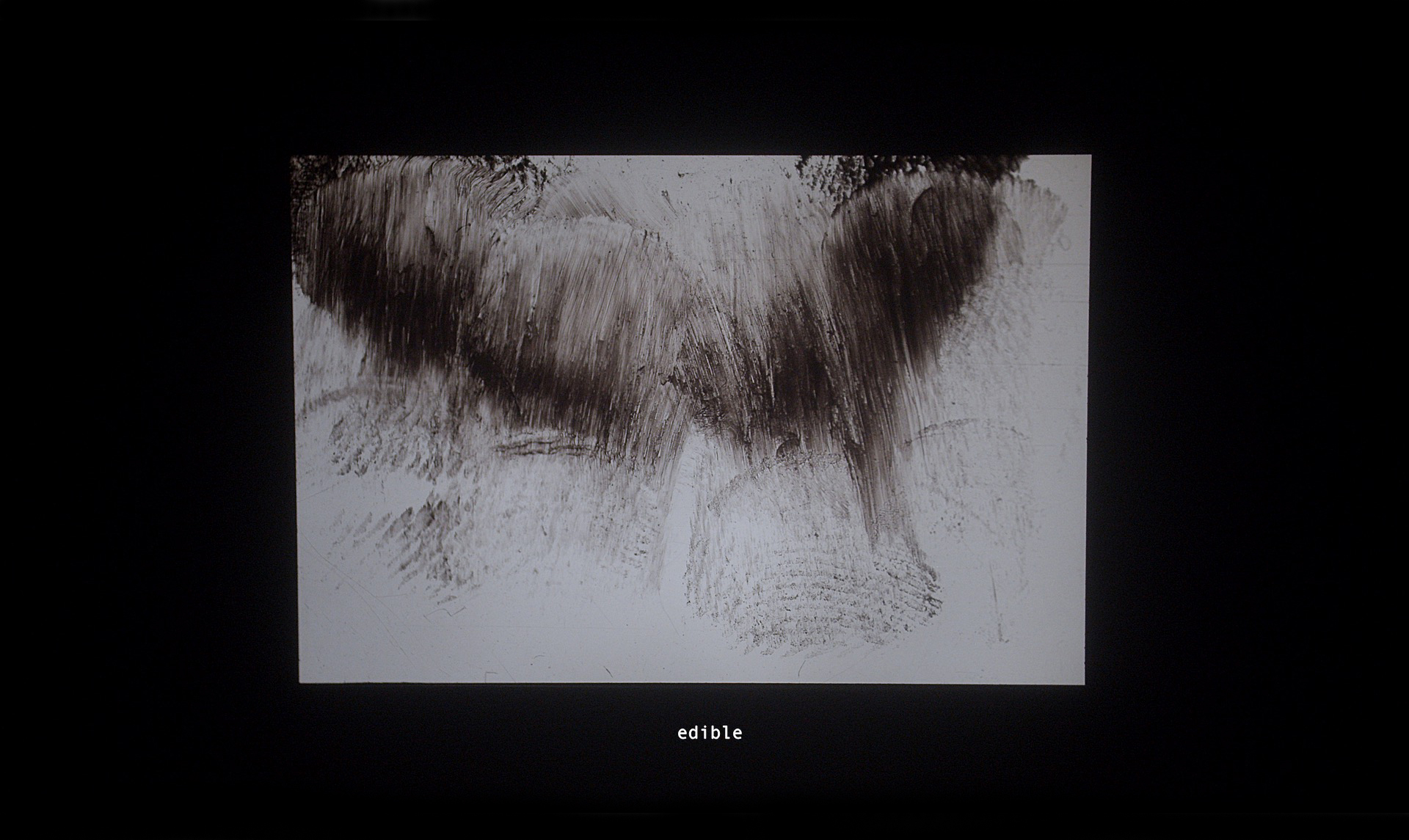
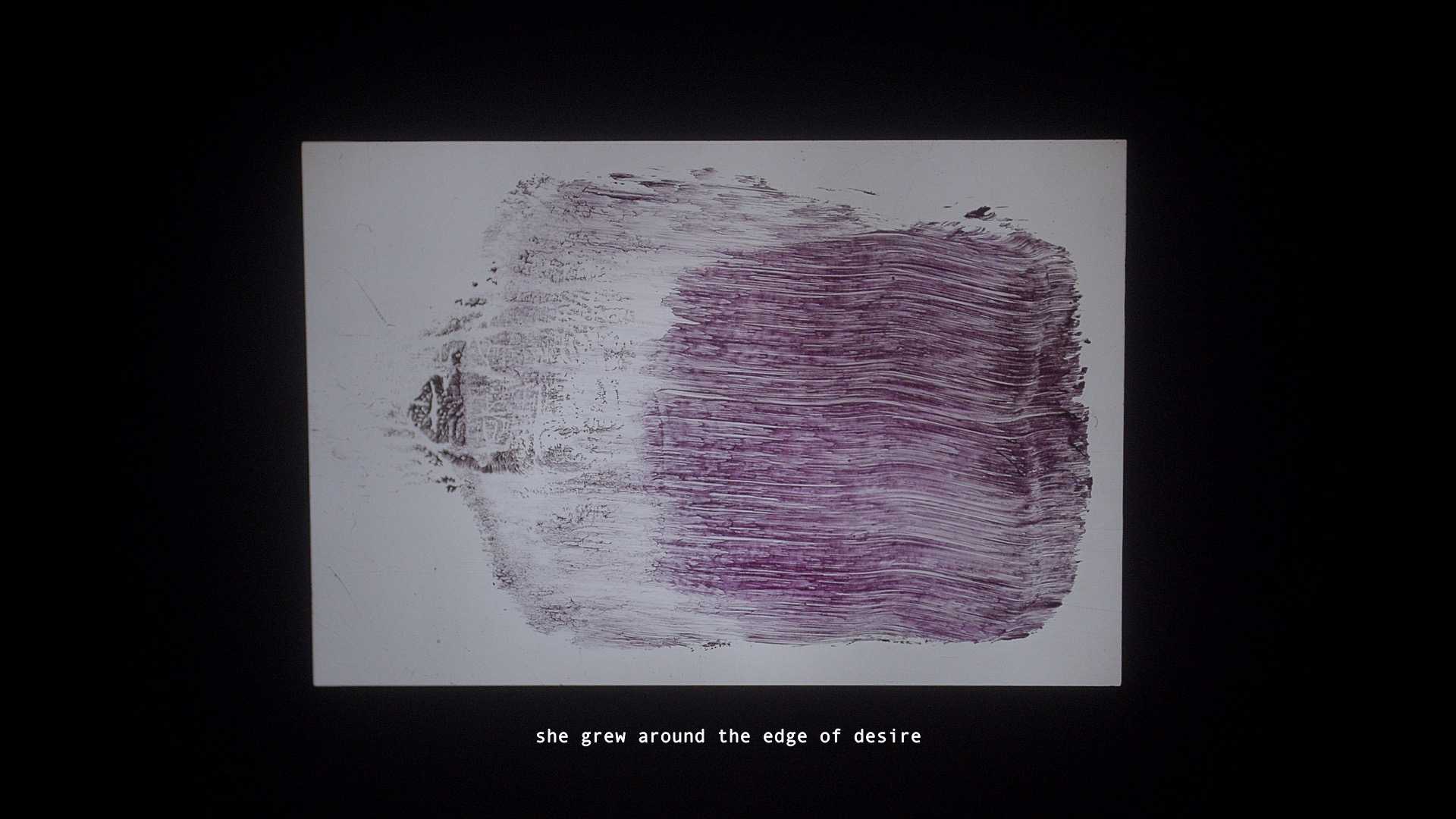
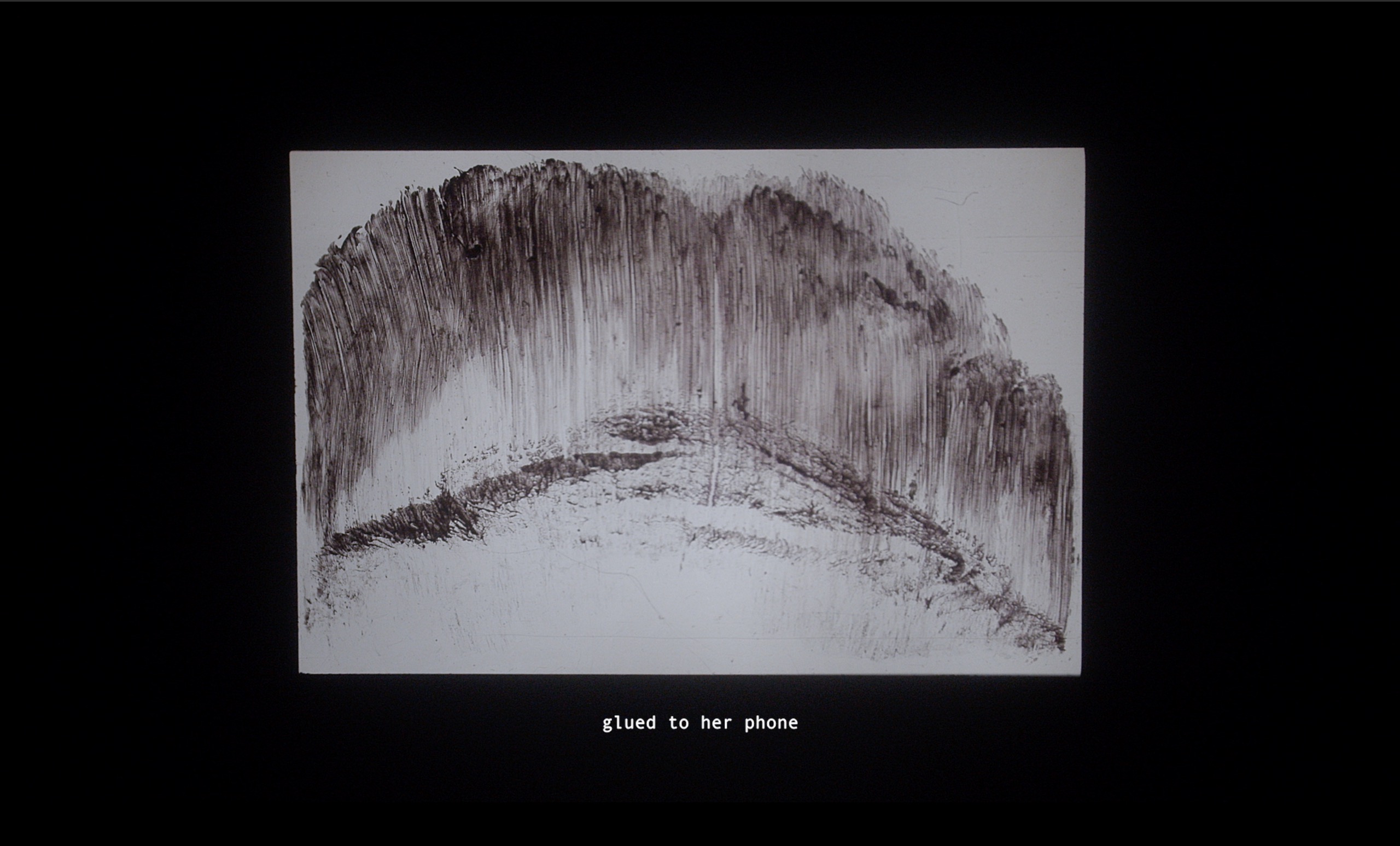
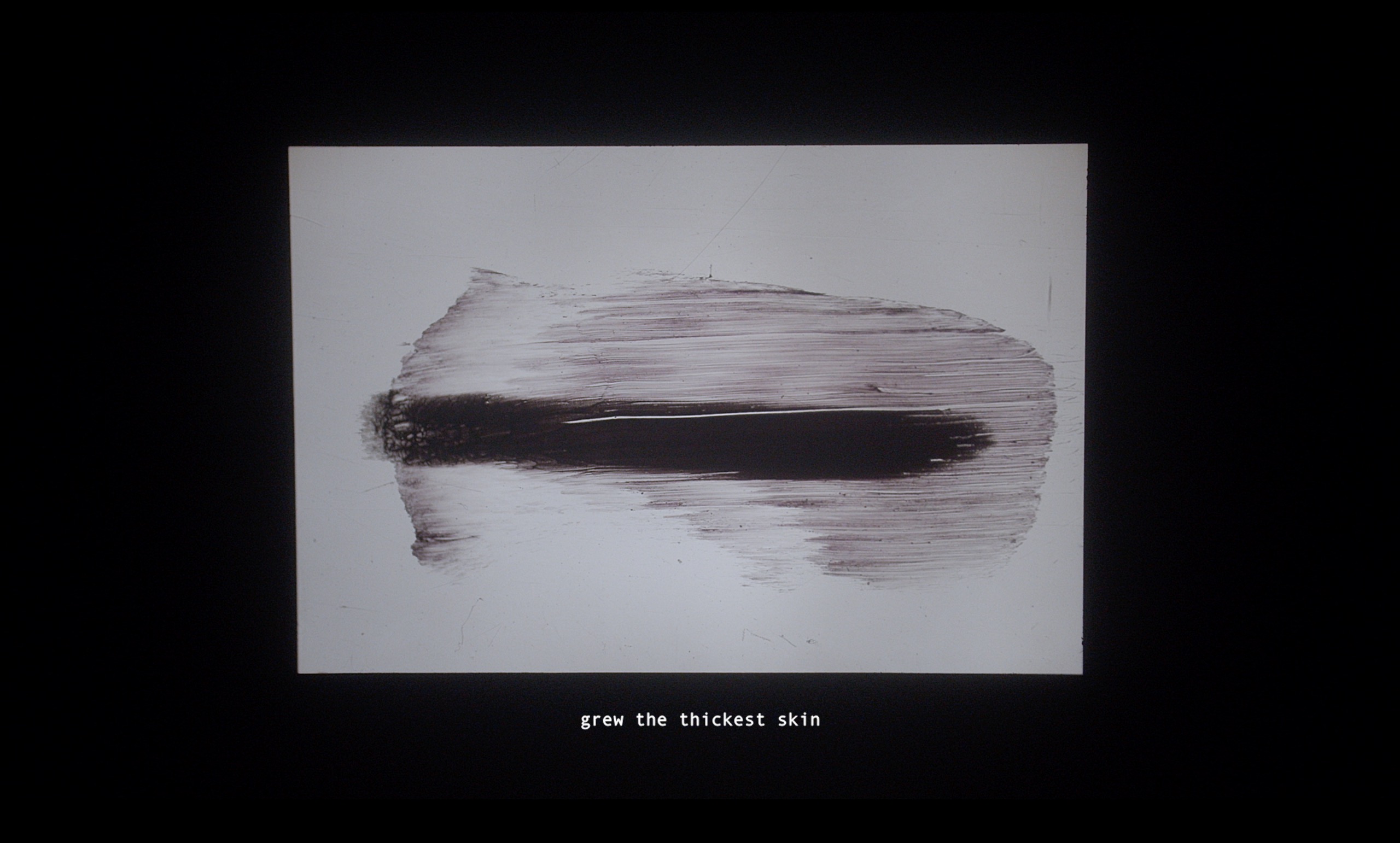
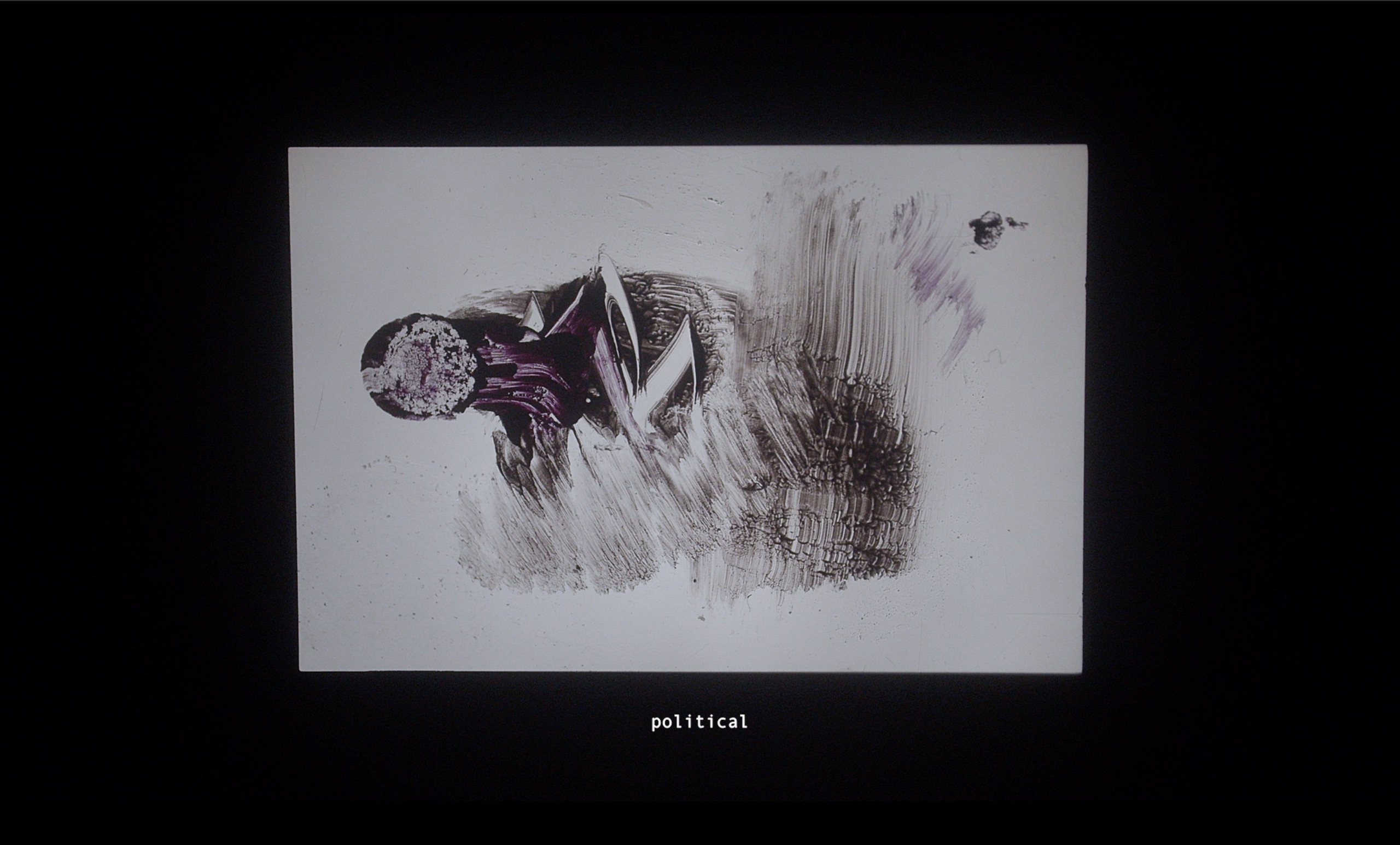
Zara Joan Miller, It Grew She Grew, 2023, performance with 35mm slide projector. Images courtesy of the artist.
RÖK: What’s next for you?
ZJM: I recently shot a film about an artist and brain injury survivor called Errol so I'll be editing that. I’m also working on a new book which I think I will piece together very slowly. Because the intention is for it to be shaped by entering motherhood, so it's almost a project that the baby will help with. I feel like I can't say too much about it until there's more structure to it, but I think it will be a mixture of poetry, prose, and maybe some interviews, so quite a different format to Blue Monday.
ZJM: I recently shot a film about an artist and brain injury survivor called Errol so I'll be editing that. I’m also working on a new book which I think I will piece together very slowly. Because the intention is for it to be shaped by entering motherhood, so it's almost a project that the baby will help with. I feel like I can't say too much about it until there's more structure to it, but I think it will be a mixture of poetry, prose, and maybe some interviews, so quite a different format to Blue Monday.